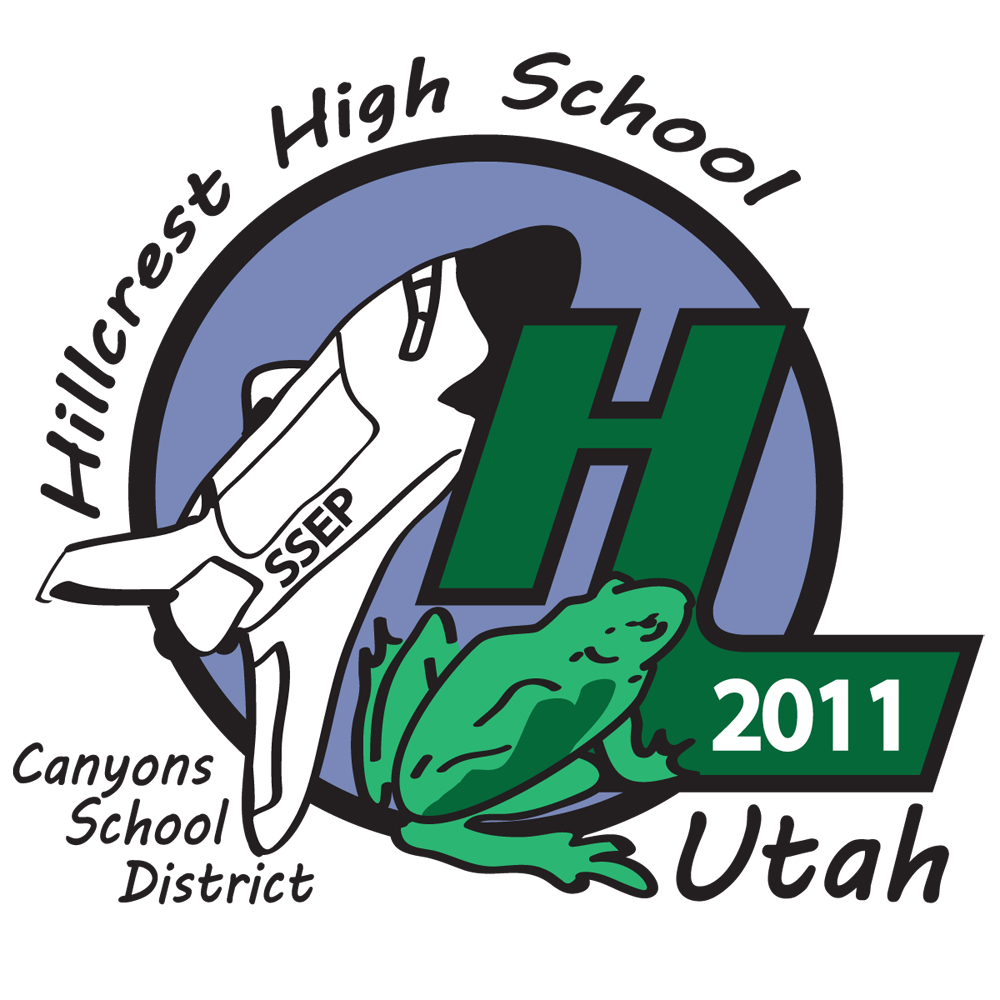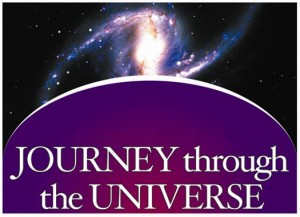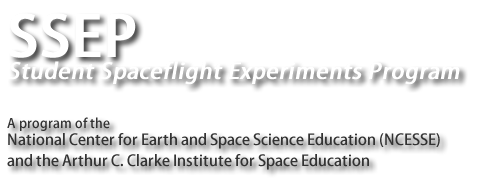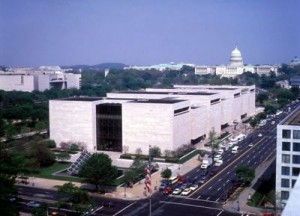NOTE: This is a sub-page of the About SSEP main page which you should read first.
We believe that the excitement surrounding a community-wide competition to fly an experiment aboard the final scheduled flights of the Space Shuttle, and as part of SSEP Phase 2, aboard the International Space Station, should be leveraged into a celebration of the joys of learning, the nature of human exploration, and a broader commitment to STEM education that is strategically tuned to local curricular need. We have therefore embedded the Flight Experiment Design Competition within a programmatic framework that can engage grade K-12 students, their teachers, their families, and the public across your community, and that allows the experience of the community competition to be shared with national—even global—audiences.
Below is a list of the Community Program elements (they are provided as part of the Baseline Program Cost unless otherwise noted)—
1. General Program Resources
 The Main SSEP Website
The Main SSEP Website
This website, which serves as a comprehensive clearing house for SSEP program information. This website also contains the SSEP National Blog, providing the latest program news and updates. Subscribe to the Blog on the SSEP Home Page to keep up-to-date.
 SSEP Community Network Hubsite
SSEP Community Network Hubsite
The Hubsite provides an online gathering spot to explore all SSEP activities across the network of participating communities. The Hubsite includes Community Profiles, an SSEP In the News page providing links to media coverage across the nation; a showcase for Experiments Selected for Flight, and a Community Blog Stream, with posts from across the SSEP Community Blogs (see 2 below) and the SSEP National Blog aggregated in one place. If you want to keep up with the world of SSEP, the Hubsite is the place to go.
Student Team Clips Archived at YouTube
We invite communities to submit video clips produced by classes designing SSEP experiments. A clip can address the SSEP experience as the class sees fit, and can be submitted any time. Clips will be featured on the SSEP Community Network Hubsite.
2. A Customized SSEP Blog Just for Your Community
 For each participating community we will provide and host a SSEP Community Blog, a place where your students and teachers can provide continuous reporting on activities, from design competition and flight experiment selection; to the flight aboard the Space Shuttle or International Space Station; to data retrieval, data analysis, and reporting of experiment results. The Blog also has a significant number of resource pages, including: a profile of your community, a description of how you implemented SSEP in your community, your district’s strategic needs in STEM eduction and how SSEP helps meet those needs, profiles of your student teams and descriptions of their proposed experiments, an In the News page with links to local areas coverage of your program, and a page detailing how the public can support SSEP in your community.
For each participating community we will provide and host a SSEP Community Blog, a place where your students and teachers can provide continuous reporting on activities, from design competition and flight experiment selection; to the flight aboard the Space Shuttle or International Space Station; to data retrieval, data analysis, and reporting of experiment results. The Blog also has a significant number of resource pages, including: a profile of your community, a description of how you implemented SSEP in your community, your district’s strategic needs in STEM eduction and how SSEP helps meet those needs, profiles of your student teams and descriptions of their proposed experiments, an In the News page with links to local areas coverage of your program, and a page detailing how the public can support SSEP in your community.
The Blog has a straightforward WordPress content management system, with the local community responsible for content entry, and NCESSE providing ongoing IT support and hosting.
As an example, see the Ballston Spa, NY, SSEP Community Blog.
3. SSEP Weekly Tweetup
 NCESSE will host a weekly Tweetup for SSEP where space scientists and engineers from across the nation will be invited to join the conversation, and provide their professional and personal insights. Powered by Twitter, the Tweetup will be a vibrant, dynamic weekly get-together where participating students, their teachers, and their families can gather around a 21st century water cooler and have a conversation about SSEP, science education, and human exploration. For a deeper sense of the experience, read the following essay at Huffington Post:
NCESSE will host a weekly Tweetup for SSEP where space scientists and engineers from across the nation will be invited to join the conversation, and provide their professional and personal insights. Powered by Twitter, the Tweetup will be a vibrant, dynamic weekly get-together where participating students, their teachers, and their families can gather around a 21st century water cooler and have a conversation about SSEP, science education, and human exploration. For a deeper sense of the experience, read the following essay at Huffington Post:
The Remarkable Power of Twitter: A Water Cooler for the 21st Century
4. Student Voices of Mission Control
 Each participating community will have a designated Twitter account where Student Voices of Mission Control can provide real-time continuous coverage of the flight, from pre-flight preparations, to launch, flight operations, and on-orbit experiment. The Twitter accounts will be advertised on the SSEP Community Network Hubsite, on the SSEP National Blog, and your SSEP Community Blog. The goal is to provide live, interactive coverage of your local experience for both a national and global audience.
Each participating community will have a designated Twitter account where Student Voices of Mission Control can provide real-time continuous coverage of the flight, from pre-flight preparations, to launch, flight operations, and on-orbit experiment. The Twitter accounts will be advertised on the SSEP Community Network Hubsite, on the SSEP National Blog, and your SSEP Community Blog. The goal is to provide live, interactive coverage of your local experience for both a national and global audience.
 5. Mission Patch to Fly in Space—A Student Design Competition
5. Mission Patch to Fly in Space—A Student Design Competition
Community-wide engagement, and cross-disciplinary learning are also cornerstone objectives for SSEP in the context of the embraced Learning Community Model for STEM education. In this spirit, for at least STS-134 and STS-135, we’re providing the opportunity for students across your community to design a Mission Patch—a paper 4-inch x 4-inch square emblem that captures your SSEP experience. We will then fly your Mission Patch in space as part of the payload containing your experiment. While participation should be open to at least the students participating in the SSEP experiment design competition (which is limited to grades 5-12), we encourage each community to broaden participation by opening the design competition to wider student involvement across grades K-12, and to classes beyond STEM disciplines.
At right is the Mission Patch from Canyons School District in Utah which is flying with their experiment on STS-134. Click on their emblem to see it up close and personal. See all the Mission Patches flying on STS-134 at the SSEP Community Network Hubsite.
6. Community-Wide Programming by a National Team of Scientists and Engineers
 Your community can host—for up to a week—a National Team of scientists and engineers (and educators if you would also like professional development for teachers) to celebrate the accomplishments of ALL the students engaged in the Flight Experiment Opportunity, and to serve as role models and heroes to America’s next generation of scientists and engineers.
Your community can host—for up to a week—a National Team of scientists and engineers (and educators if you would also like professional development for teachers) to celebrate the accomplishments of ALL the students engaged in the Flight Experiment Opportunity, and to serve as role models and heroes to America’s next generation of scientists and engineers.
The researchers on the National Team are from research institutions across the nation—and these are scientists and engineers who are selected because they are passionate about their research and gifted at communicating that passion to audiences of all ages.
The programming is delivered through NCESSE’s Journey through the Universe national initiative, which embraces a Learning Community Model for science education. In each community, classroom visits by the National Team for up to thousands of students—one classroom at a time, and presentations to families and the public, will provide an authentic view of the nature of science, the lives of modern-day explorers, and the educational pathway to the frontier. The hallmarks of the visits and presentations are audience participation, very personal and personable stories of exploration, and embracing the notion that science is organized curiosity—the art of posing a question, crafting a pathway to an answer, and reveling in learning something wholly new. The family and public presentations will also be the venues where the community as a whole can honor all the classes that proposed experiments, and where awards can be bestowed for participation in the Student Spaceflight Experiments Program.
Programming can also include a 1-day workshop for 30 to 200 educators at any grade level, customized to local curricular need, and capable of addressing a variety of topics, including: use of inquiry-based learning in the classroom, experimental design, and how to participate in Phase 2 of the Student Spaceflight Experiments Program aboard the International Space Station. Additional day-long workshops to week-long summer institutes can also provide training on grade K-12 compendia of lessons in the Earth and space sciences, spaceflight, and space engineering that are designed to national science education standards.
Through choice of available content and programming resources, communities small and large can create a customized Journey through the Universe program that reflects their strategic needs in STEM education; can be delivered systemically across an entire school district; and is designed to be sustainable.
Visit the Journey through the Universe page at the NCESSE website as a one-stop-shop for program details, including a comprehensive set of links to pages on program design, pedagogy, assessment, available content, connections to standards and NCLB, and to extensive testimonials from the educational leadership in communities across the nation.
As a benchmark: consider a Team of 3 researchers traveling to your community for a week of Classroom Visits, Monday through Friday mid-day, with arrival on Sunday, and departure Friday afternoon. The Team would conduct a maximum of 65 class visits, of typically 45 minutes each. If each visit is to a class of 30, then 1,950 students would be engaged. If each presentation is to a double class, then the student audience will be nearly 4,000 students. The Team will also conduct at least 1 and a maximum of 2 Family and Public Programs for the community. Baseline Assessment will be conducted for both the Classroom Visits and Family and Public Programs. The community can add supplemental programming, e.g., a Professional Development Workshop for teachers, or request a larger National Team to reach a larger student audience.
Note: the Baseline Program Cost does not cover the cost of community-wide programming delivered by the National Team. This is a Supplemental Program Option.
7. Ongoing Coverage of the National SSEP at the Center’s Blog on the Universe
 Blog on the Universe is dedicated to science education as conceptual understanding at an emotional level. We will be showcasing SSEP participating communities and covering the flight opportunities on the Blog.
Blog on the Universe is dedicated to science education as conceptual understanding at an emotional level. We will be showcasing SSEP participating communities and covering the flight opportunities on the Blog.
The Blog also addresses myriad concepts in spaceflight and the Earth and space sciences with posts that are timeless, designed with teachers in mind, are directly relevant to national standards and the curriculum across STEM disciplines, and include strong interdisciplinary connections to history, policy, and national debate. Blog on the Universe includes a Teachers Lesson Planner allowing the Blog’s posts and pages to be used as lessons in the classroom. Visit the NCESSE website for an overview of the Blog, a listing of the Blog’s essays together with associated essential questions, and how to subscribe to the Blog for email notification of new posts.
We will also be showcasing relevant past Blog on the Universe posts and pages on a regular basis through SSEP.
8. A National Conference in Washington, DC
A SSEP National Conference will be held in the nation’s capital where students from all communities participating in the SSEP can present on their experiment designs, and those teams that flew experiments can report preliminary results. We want to immerse students in the experience of a science conference. It is fitting. If the SSEP is dedicated to letting students step into the shoes of scientists and engineers, then a conference should be part of the experience.
The conference will include featured presentations by nationally recognized space scientists and engineers who will passionately talk about exploration, and hopefully inspire many young women and men in the audience to follow in their footsteps.
We will also be setting up tours and potentially a program at the Smithsonian’s National Air and Space Museum—the most visited museum on the planet—for conference attendees. The Center has been conducting powerful science education programs in partnership with the Museum’s Education Division for 19 years.
Note: the Baseline Program Cost does not include a conference registration fee per attendee. This is a Supplemental Program Option. In addition, all travel costs, including airfare, hotel, meals, and miscellaneous travel, are the responsibility of the attendees.
Return to About SSEP main page?

